# Placing The Base Station
In order to obtain a precise line marking it is very important to consider where the Base Station is placed.
# Tall Trees
Placing the Base Station next to tall trees will cut off otherwise visible satellites. The line marking will potentially be less precise, or the Turf Tank One can stop painting all together. The further away from tall tress the Base Station can be placed the better it will be.
Good position
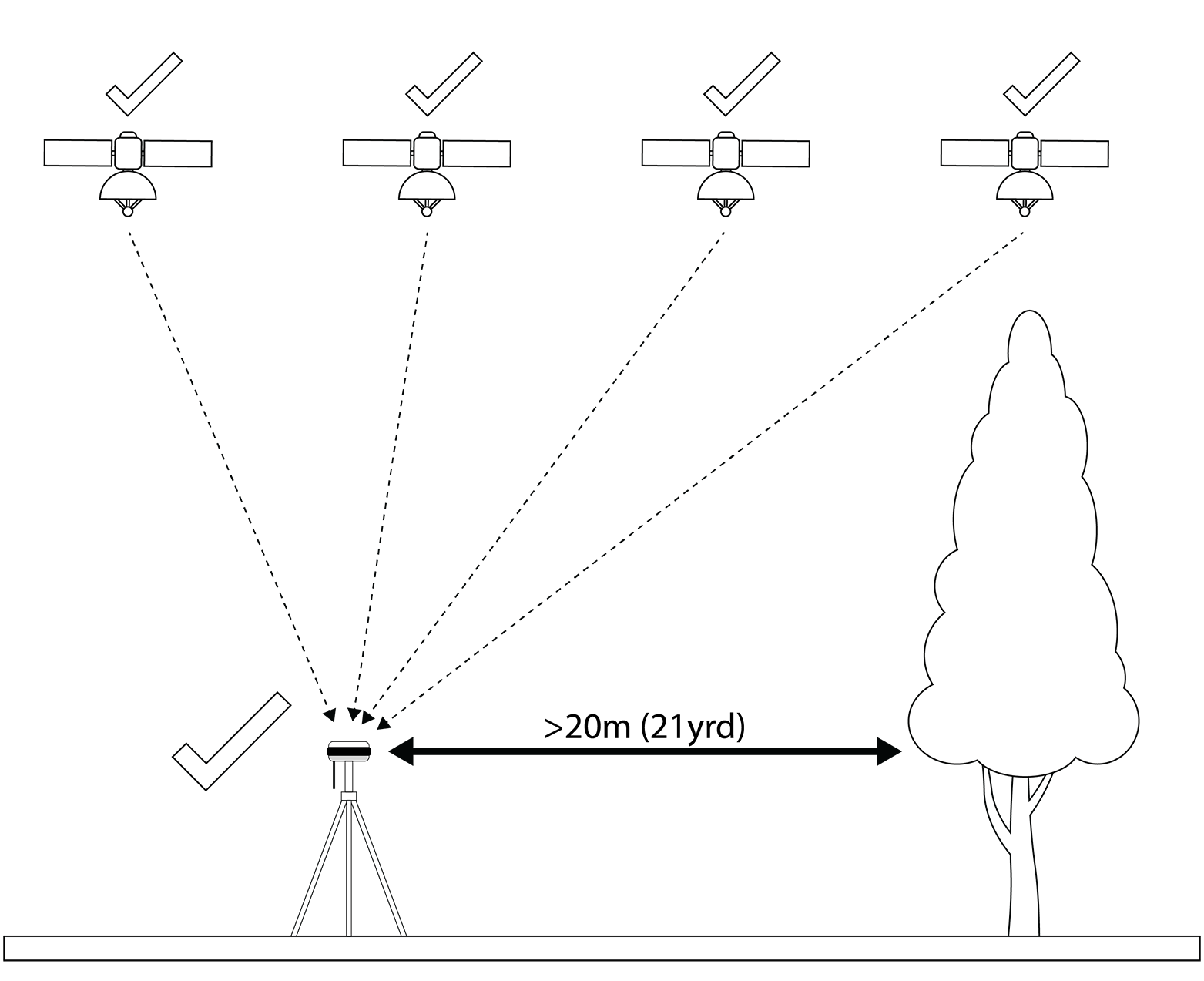
Bad position
Trees are obstructing the satellites.
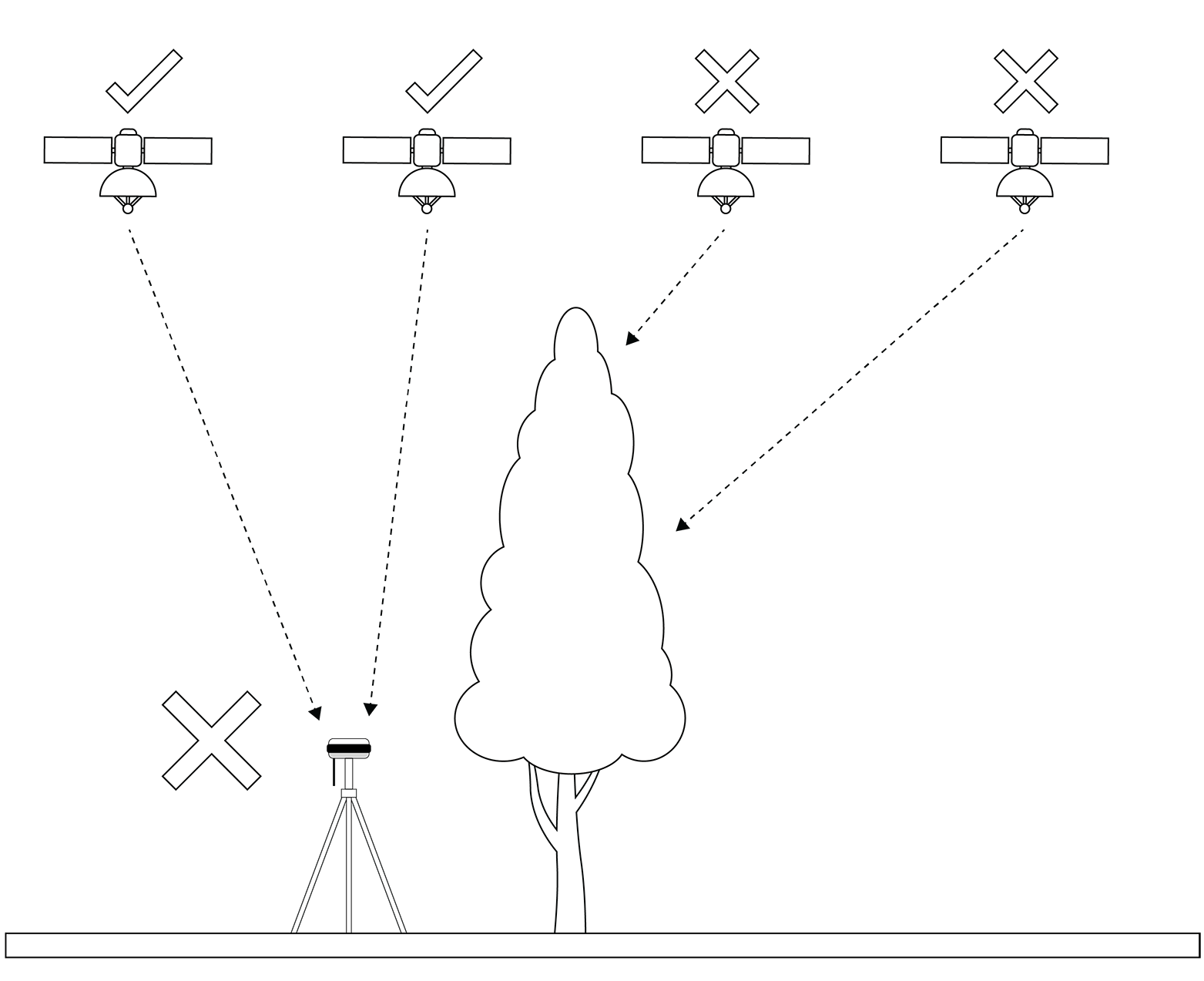
# Structures
Placing the Base Station next to buildings and fences taller than the Base Station will cut off otherwise visible satellites. The line marking will potentially be less precise, or the Turf Tank One can stop painting all together. The further away from tall buildings the Base Station can be placed the better it will be.
Good position

Bad position
In this case, the building is obstructing the satellites.
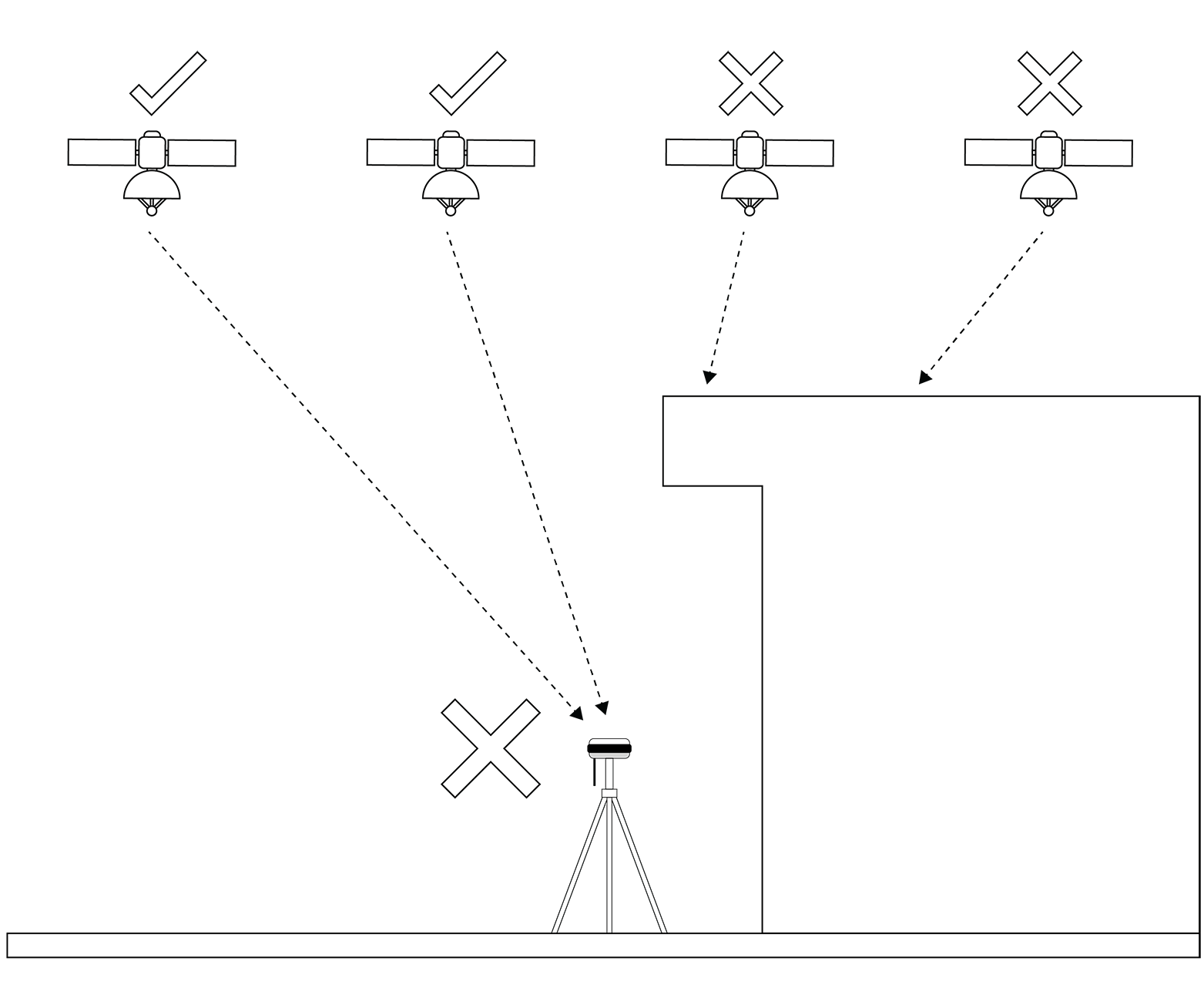
# Obstrucing Line Of Sight - Base Station To Turf Tank One
Placing the Base Station such that it cannot directly “see” the Turf Tank One must be avoided since the Turf Tank One's precision is increased by the position correction data sent from the Base Station. Obstructing objects can be buildings, fences, trees, hedgerows etc.
Good position
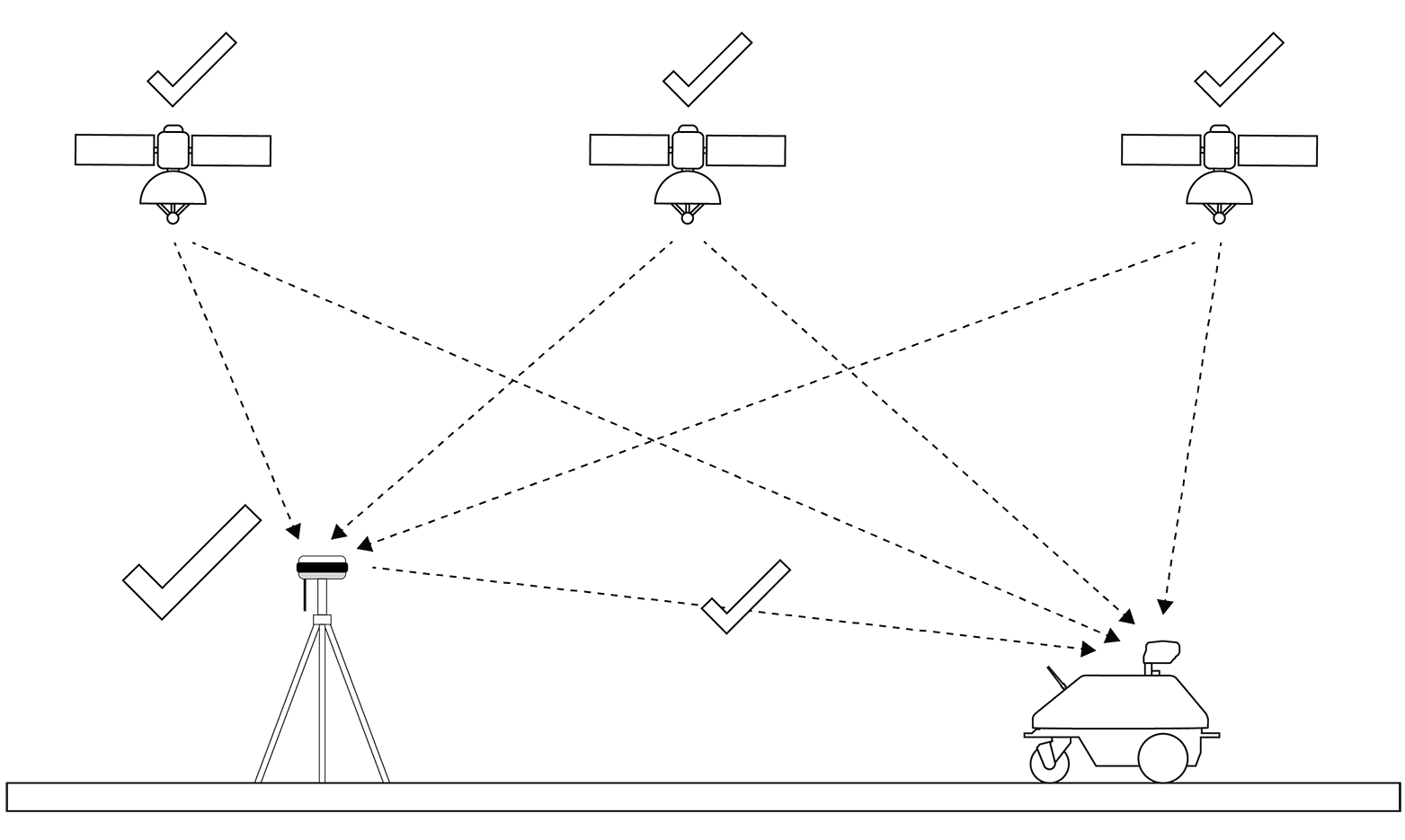
Bad position
In this case, an object is obstructing the line of sight between the Base Station and Turf Tank One.
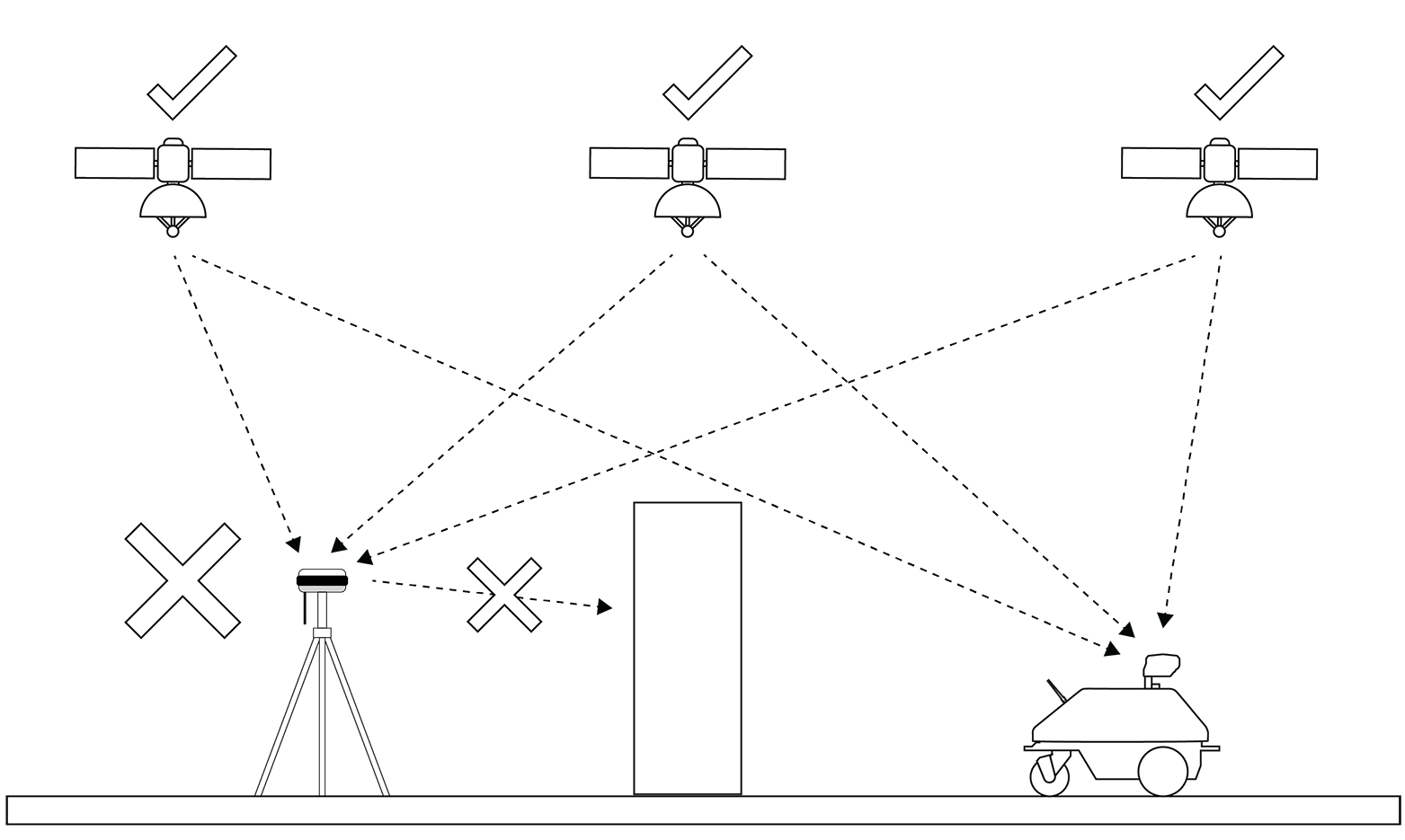
# Obstrucing Line Of Sight - Turf Tank One To Satellites
Both the Base Station and Turf Tank One needs a connection to the satellites. It is not possible for the Turf Tank One to paint if it cannot connect to the satellites. Even if the Turf Tank One has “line of sight” with the Base Station. The “overhanging” structure can also be trees which prevents the Turf Tank One from connection to the satellites. This also means that indoor painting is not possible even with the Base Station placed outdoors.
Bad position
The Turf Tank One cannot "see" the satellites.
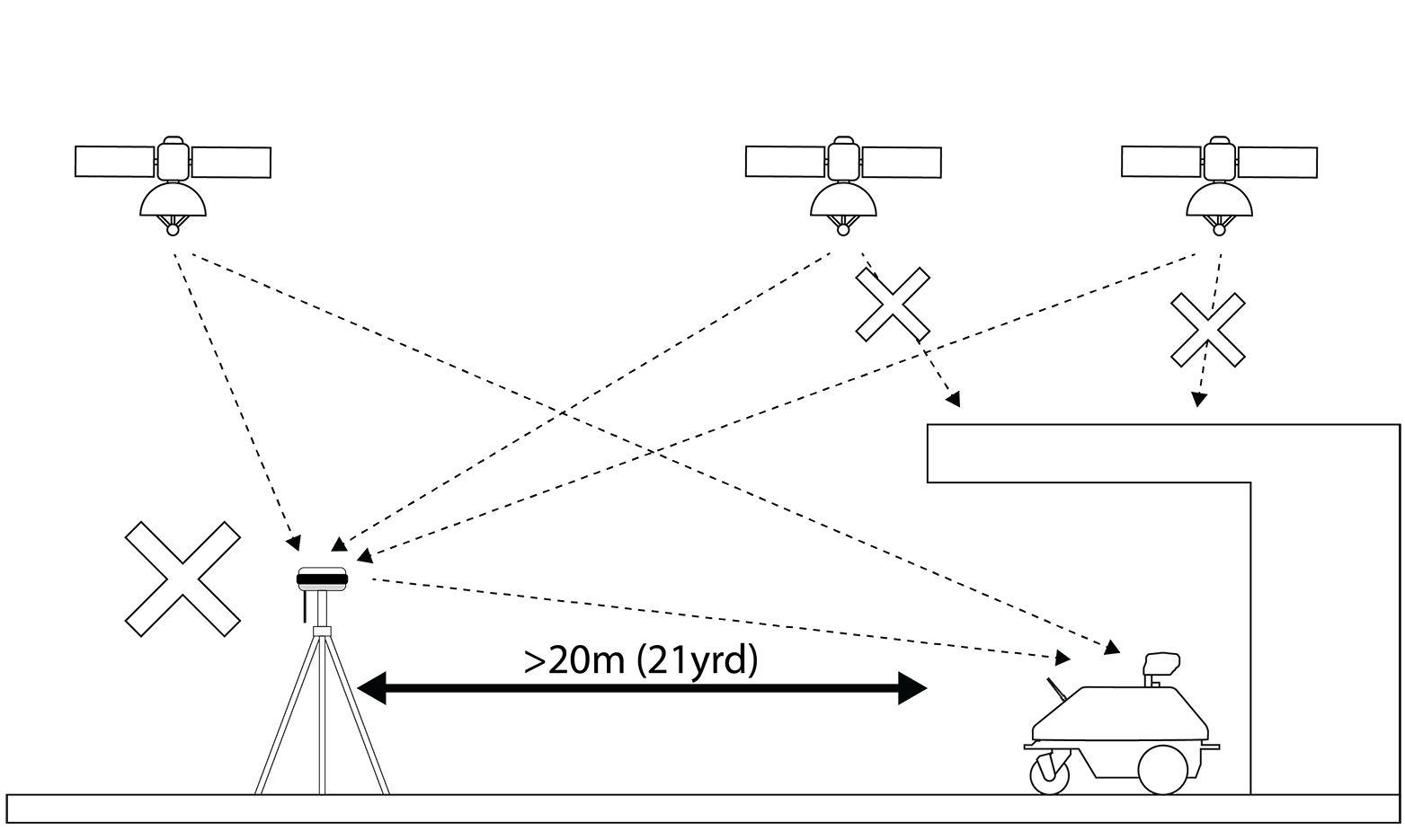
# Sloped Surfaces
Placing the Base Station on a sloped surface will potentially cut off otherwise visible satellites, and line marking can be less precise. If a sloped surface can´t be avoided it is highly important to use the leveling bubble to ensure a level position. If a sloped surface cannot be avoided, the telescopic legs of the tripod must be used to compensate for the incline to keep a level position for the Base Station
Good position
Base Station is placed on a flat surface.

Good position
Base Station is level despite being placed on a sloped surface.

Bad position
The Base Station is not level.
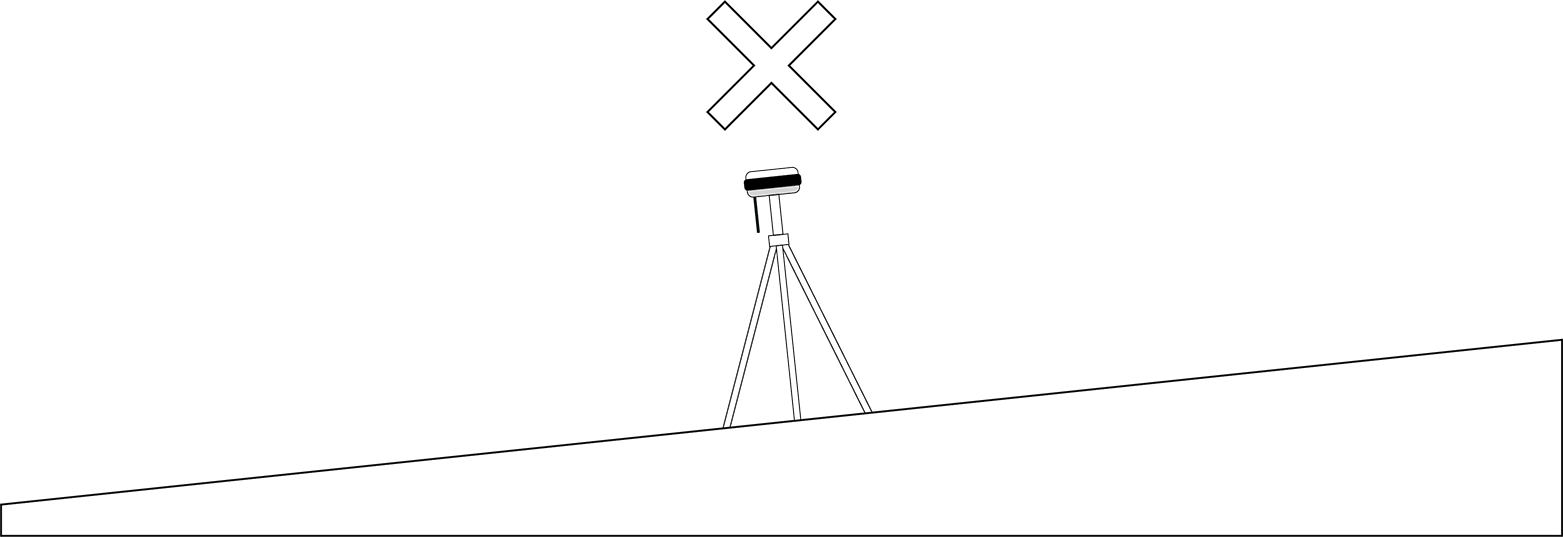
# Placing At field
When marking a field it is important to place the Base Station in such a way that the Turf Tank One will not hit the Base Station while operating. Additionally, moving the Base Station during operation it not permitted. This will offset the line which the Turf Tank One is currently painting.
If placing the Base Station on the field, the operator needs to be certain about where the painted field will be. This also includes the transit lines (non-painted lines or routes which the Turf Tank One follows when moving from one painted line to another). Below is an example with a soccer field where the Base Station is placed on field. Transit lines are shown as green (not all transit lines are shown). Both painted lines and transit lines does not interfere with the Base Station. It can also be an advantage to place the Base Station on field, especially if marking a stadium or a field surrounded by trees.
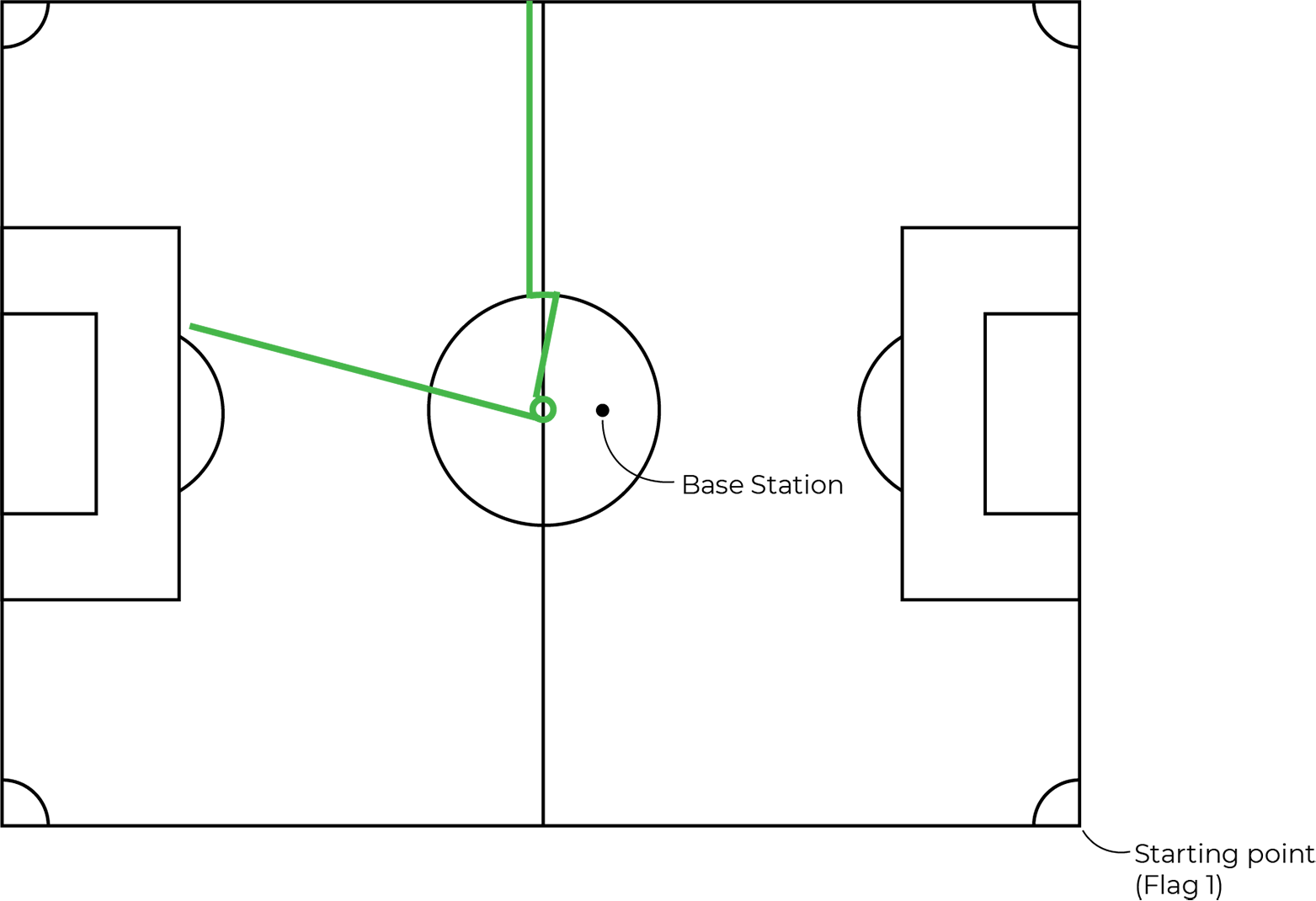
Another option is to place the Base Station next to the field (rather than on the field).
Shown below is a guideline regarding how close the Base Station is placed to a field.
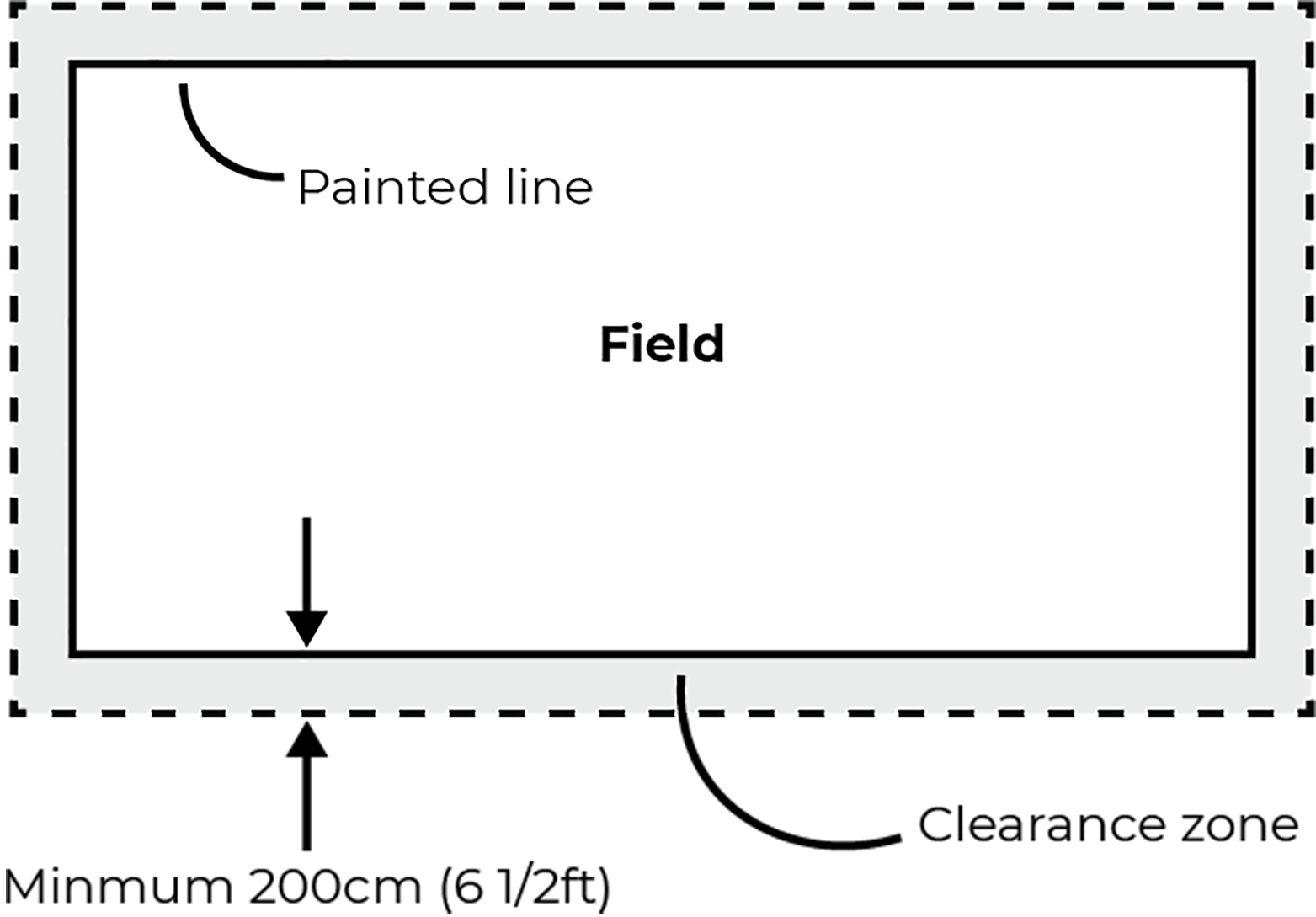
Please note
If placing the Base Station next to the field it is important to still ensure that the guidelines regarding trees, structures, line of sight and sloping surfaces are kept.
